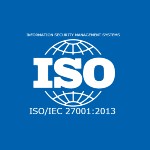Identifying Promising Pharma Licensing Candidates
Posted by |
Background
A mid-size specialty pharmaceutical company was interested in licensing promising early-stage compounds in order to add critical mass to its portfolio. To gain clarity about the available options, and which would be a ‘best fit’, they engaged Fuld & Company.
 Challenge
Challenge
Through several recent acquisitions, the company had entered therapeutic areas to which it was new. They wanted to augment their pipeline and overall product portfolio, but without experience in those areas, they were ‘flying blind’. Further, because they had a limited budget, they could not afford to make poor choices among the many potential worldwide candidates.
Approach
Combining our global footprint, industry knowledge, and research experience, our team:
- Worked with the client to develop clear and concise business rules about what types of compounds, companies, and therapeutic approaches to include in the initial
- Produced a landscape assessment to give the client an idea of the current, and future, competitive dynamics of the disease space so that they had an idea of how ‘crowded’ the market might
- Conducted a broad-based sweep of early-stage compounds to compare against the business rules, and create a shortlist of appropriate
- Interviewed sources at the target companies, as well as key opinion leaders in the target disease fields, about those compounds.
- Analyzed the data to create a list of recommended compounds, and rule out what might otherwise have appeared to be likely candidates.
Worked directly with client personnel to develop arguments, and to support net present value (NPV) analysis, to create a business case in support of potential candidates for in-licensing or acquisition
Factors to Consider
Pharma companies typically conduct in-house secondary research on developments in their field, looking at public records and various drug databases, as well as patent filings and published papers, in the hope of identifying compounds for in-licensing, or even companies for acquisition. Such research often gives the impression that many worthy candidates exist when, in fact, many of them have stalled, or actually show little promise.
Benefit + Results
The client, who had previously practiced ‘opportunistic’ business development, was now equipped with specific business rules governing in-licensing and acquisition. These rules encompassed such issues as therapeutic areas of interest, size of deal, degree of innovation and competition, and more. With this new approach in place, the client was able to focus on compounds that were more likely to create synergies with their current portfolio. With the in- house work of identifying targets reduced, and with a smaller number of genuinely promising candidates in hand, the client subsequently in-licensed two of the compounds we recommended, and has now successfully commercialized one of them.
Download PDFTags: BioPharma, Competitive Intelligence, Early Warning & Monitoring, Health & Life Science, Product Lifecycle Management, Strategic Planning

















